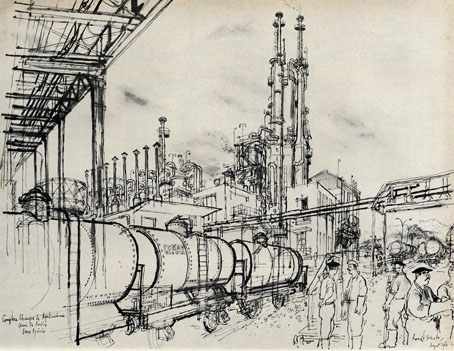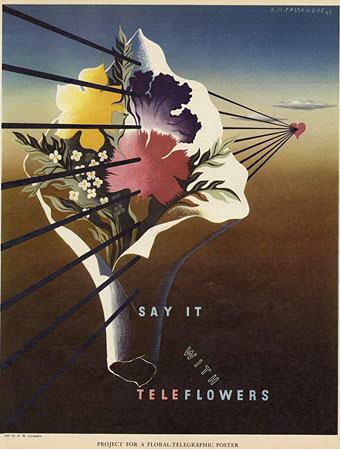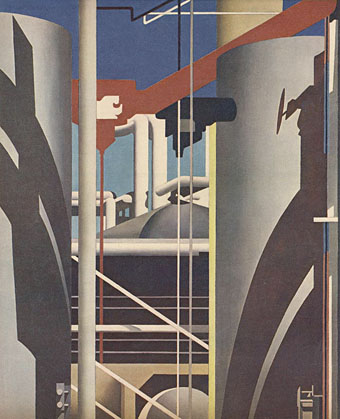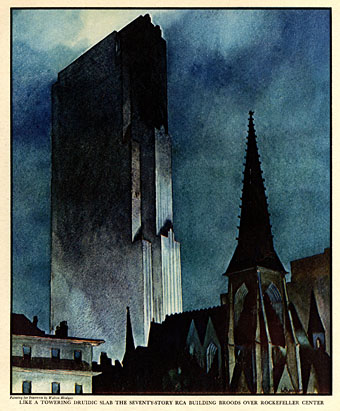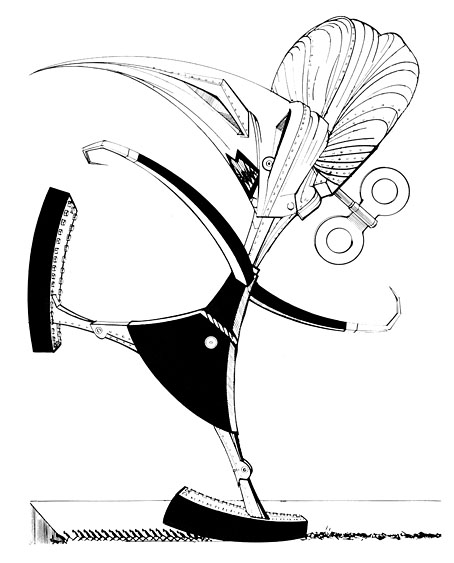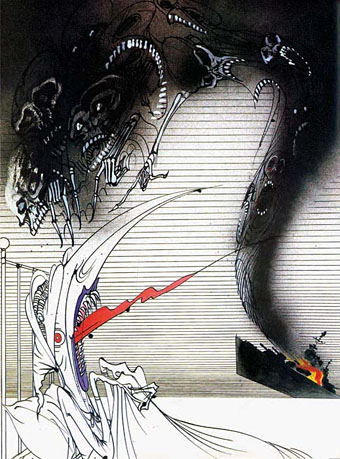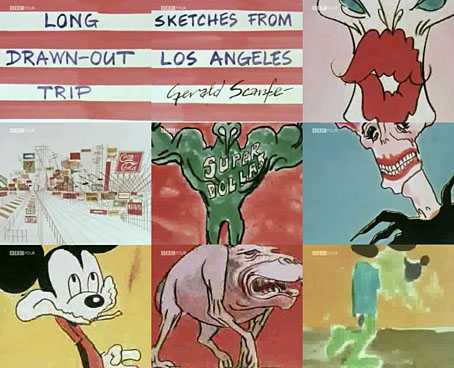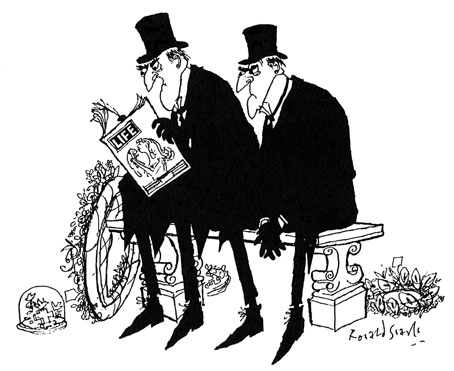
Undertakers. From Punch magazine (undated).
I started trying to draw like Ronald Searle when I was about eight. So there was Jabberwocky and Ronald Searle I was turning into by the time I was thirteen. You know, I was determined to be Lewis Carroll (giggles) with a hint of Ronald Searle.
John Lennon, 1968
Does the late Ronald Searle need any introduction? Everyone knows he created the anarchic schoolgirls of St Trinian’s in the 1940s, although their exploits had the greatest audience in the films based on Searle’s cartoons rather than the original drawings. Searle’s work first came to my attention through reprints of the Molesworth books he produced with Geoffrey Willans in the 1950s—Down with Skool! (1953), How to be Topp (1954), Whizz for Atomms (1956) and Back in the Jug Agane (1959)—a masculine riposte to St Trinian’s which allowed for a broader range of humour than the slapstick and short-skirted salaciousness the films drifted into. The Molesworth books are perhaps best appreciated at age 11 as this LRB review notes; looked at with older eyes all I see is a portrait of a rigidly class-bound nation whose boarding schools, gowned masters, “maters” and “paters” could only inspire affection in the Etonians currently attempting to govern Britain. But the drawings remain a treat: wiry and mordant with flashes of a viciousness that make Searle the godfather of Gerald Scarfe and Ralph Steadman.
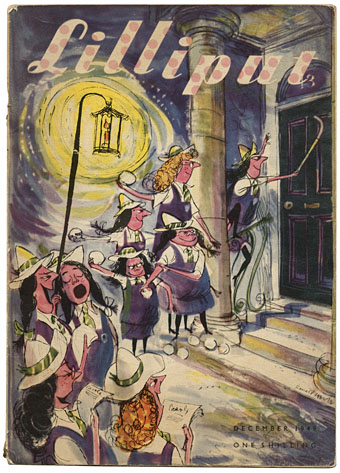
The girls of St Trinian’s, Lilliput magazine, December 1949.
Given Searle’s influence on generations of newspaper cartoonists it’s no surprise that the British papers are being free with the plaudits. Links to various stories follow. The images here are taken from earlier posts or pulled from my bookshelves. The illustration of Engelbrecht below is from the Savoy Books edition of Maurice Richardson’s The Exploits of Engelbrecht which I designed in 2010.
• Guardian obituary | Telegraph obituary | NYT obituary
• Ronald Searle in pictures: Telegraph | Guardian
• Ronald Searle: a life in pictures by Steve Bell.
• Mike Leigh: ‘Ronald Searle was my inspiration’.
• Ronald Searle: Now let’s have some fizz: Gerald Scarfe remembers his friend and childhood hero.
• Ronald Searle was our greatest cartoonist – and he sent me his pens, says Martin Rowson.
Other links:
• Perpetua, the Ronald Searle tribute
• Searle at VTS
• Winespeak at BibliOdyssey
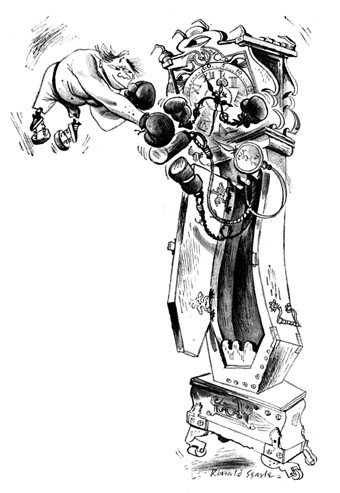
Engelbrecht versus Grandfather Clock. From The Exploits of Engelbrecht (1950) by Maurice Richardson.
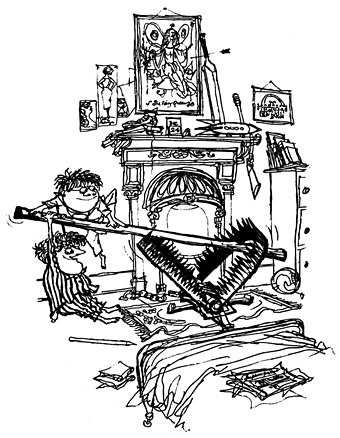
“A trap for dere Santa”. From How to be Topp (1954) by Geoffrey Willans and Ronald Searle.
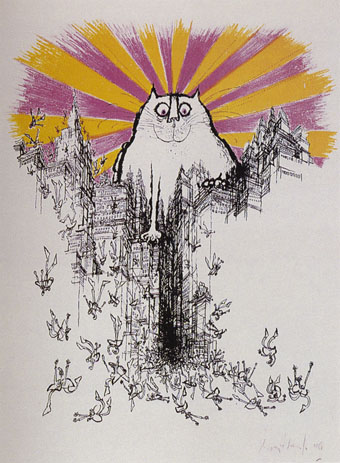
The Coming of the Great Cat God (1968).
Elsewhere on { feuilleton }
• The illustrators archive
Previously on { feuilleton }
• Engelbrecht lives to fight another day
• Ronald Searle book covers
• Engelbrecht again


